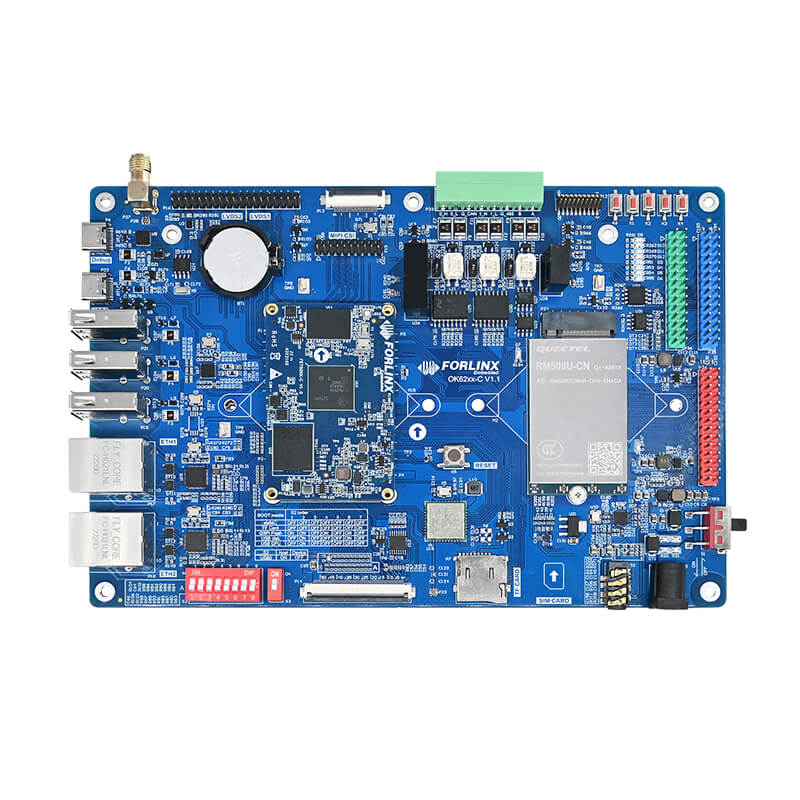
3 Key Elements Influencing the Next Generation of HMI
HMI is the medium for interaction and information exchange between the system and the user, and HMI continues to evolve as technology advances. New interaction modes will be added to future HMI in addition to the three basic functions: control, data collection, and display to enable machines to work smarter and interact more efficiently with humans.
The new demand for smarter human-computer interaction also has higher requirements for processors applied to HMI. To help engineers with terminal development needs better model selection, this article will introduce the three key elements influencing on the next generation of HMI.
01 Smarter Interactive Forms
AI will help the new generation of HMI to realize more powerful functions. For example, not only can human access to the device be realized through AI face recognition, but also can contactless control of people and equipment be realized through AI hand gesture recognition. It also allows the device to monitor and analyze the system status more accurately. In the medical field, for example, intelligent HMI systems allowing doctors to interact with medical devices through gestures.
02 Balancing Power Consumption and Performance
AI has higher requirements for processor performance, as high-level integration and better performance will increase power consumption and generate more heat. To allow the limited size of the device to cope with more diverse and complex environments, a variety of power consumption modes is important - high power, low power, and ultra-low power consumption of a variety of modes free choice, not only to allow the performance is just right to send out, but also to get better control of the cost, and to achieve a balance between power consumption and performance.
03 Better Communication Capabilities
The increase in real-time industrial communication protocols has also brought new challenges to the new generation of HMI applications. For example, the HMI applied in the smart factory not only needs to carry the task of exchanging information between people and devices but also needs to fulfill the function of communicating with other devices, which means that the HMI needs to have better connection and control functions.
Powerful Products to Empower the Next Generation of HMI
The FET6254-C SoM launched by Forlinx Embedded not only meets the human-machine interaction requirements of traditional HMI but also can realize the above three key elements to empower the new generation of HMI.
FET6254-C SoM is based on TI Sitara™ AM6254 industrial-grade processor, quad-core Arm Cortex-A53 architecture, and frequency up to 1.4GHz, which can realize the edge AI function and make HMI smarter and more intelligent. And in development, it carries out severe ambient temperature, pressure, and long-term stability operation tests, so that it can run stably in the harsh environment.
Not only is performance guaranteed, but also power consumption can be low. With a streamlined power architecture design, the AM62x processor has an extremely low power performance, a deep sleep mode as low as 5mW, and a 0.75V core voltage that keeps running power consumption below 1.5W, greatly reducing system power consumption.
AM62x processor is a new generation of TI Sitara™ product line MPU products. Compared with the previous generation of classic processors AM335x has a richer interface, 2-way support TSN Gigabit Ethernet, 3-way CAN-FD, 9-way UART, 2-way USB 2.0, 2-way LVDS, RGB, Camera, Audio, etc., so that the product has a more strong scalability of the product.
In addition to the advantages mentioned above, the FET6254-C SoM also supports U disk and TF card to burn the system and replacing Uboot, Kernel, and device tree in the operating system, which realizes the remote update of the product easily, and helps the user to save the on-site maintenance cost.
Stable quality plus rich function enables Forlinx Embedded FET6254-C SoM to show unique advantages in the new generation of HMI applications to empower HMI, whether in the industrial control, electric power, transportation, or medical industries, to allow machines to operate more intelligently and interact with humans more efficiently.



